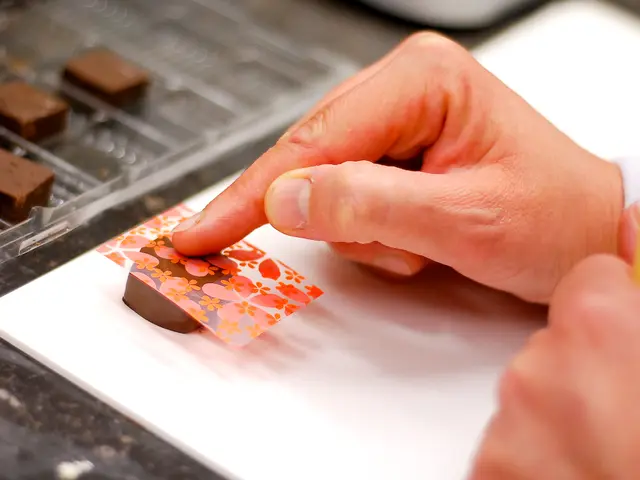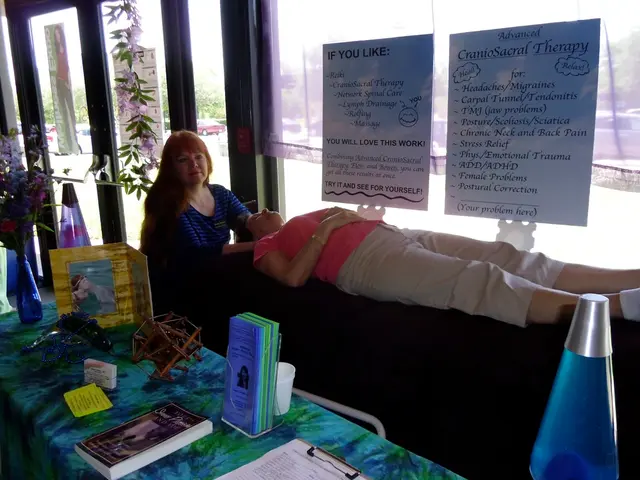Ten homemade solutions for treating varicose veins
Varicose veins, those unsightly and often uncomfortable twisted and swollen veins that can appear under the skin, are a common health issue affecting many individuals. While home remedies can provide symptomatic relief, it's essential to understand that they do not address the underlying vein valve dysfunction or chronic venous insufficiency.
Home remedies for varicose veins primarily focus on relieving symptoms such as swelling, discomfort, and redness. Some proven home remedies include:
- **Leg Elevation:** Raising your legs above heart level for 15-20 minutes daily promotes blood flow and reduces swelling. - **Movement and Exercise:** Regular leg movement, avoiding prolonged sitting or standing, helps improve circulation and reduce vein pressure. - **Compression Stockings:** Wearing medical-grade compression stockings supports veins by improving blood return to the heart and alleviating symptoms such as heaviness and discomfort. - **Dietary Adjustments:** Eating foods rich in magnesium, such as almonds, avocados, bananas, and dark chocolate, helps relax blood vessels and improve circulation. Reducing salt intake can also help minimize water retention. - **Topical Applications:** Some use natural products like castor oil applied via massage to soothe the skin and reduce redness and swelling. However, these should be used cautiously, and discontinued if irritation occurs. - **Herbal Supplements:** Ingredients like horse chestnut extract, witch hazel, butcher's broom, red vine leaves, and apple cider vinegar are popular naturopathic options that may help with vein tone and circulation.
While home remedies can be helpful for comfort and symptom management, consulting a vein specialist for evaluation and advanced treatment is advisable if varicose veins persist or worsen. Modern medical treatments such as endovenous laser therapy, radiofrequency ablation, or innovative options like VenaSeal (a tissue adhesive sealing the problematic vein without heat or compression stockings) are highly effective and restore healthy circulation.
Other modern treatments include ligation and stripping, a surgical procedure to remove varicose veins; ambulatory phlebectomy, where a doctor punctures the skin and removes varicose veins through small slits; endoscopic vein surgery, which involves a tiny video camera being inserted into the leg to help the surgeon see better, followed by the removal of the veins via a series of small incisions; and sclerotherapy, which uses a foam to close and shrink varicose veins.
Laser surgeries use intense bursts of light to fade and disappear varicose veins, while ambulatory phlebectomy involves a doctor puncturing the skin and removing varicose veins through small slits.
It is crucial to consult with a doctor to make the best and most informed decision about the right treatment for your varicose veins. Grape seed extract may help reduce swelling in the lower legs and other symptoms of chronic venous insufficiency, but it can interact with blood-thinning medication and increase the risk of bleeding.
In summary, while home remedies can be helpful for comfort and symptom management, it is advisable to consult a vein specialist for evaluation and advanced treatment if varicose veins persist or worsen. This approach prevents progression and serious complications. Wearing loose-fitting clothes, avoiding high heels, and avoiding sedentary behavior can also help improve circulation and reduce the risk of varicose veins. Regular exercise, gentle massage of the affected areas (avoiding direct pressure on the veins), and keeping the legs elevated are all effective home remedies for managing varicose veins.
- Despite its potential for symptomatic relief, leg elevation, as a home remedy for varicose veins, doesn't address the root cause of vein valve dysfunction or chronic venous insufficiency.
- In the realm of health-and-wellness, regular movement and exercise, avoiding prolonged sitting or standing, improves circulation and reduces vein pressure.
- In the world of fitness-and-exercise, wearing medical-grade compression stockings supports veins by improving blood return to the heart and alleviating symptoms like heaviness and discomfort.
- The science of nutrition suggests that eating foods rich in magnesium, like almonds, avocados, bananas, and dark chocolate, can help relax blood vessels and improve circulation.
- Topical applications of natural products like castor oil, while soothing the skin and reducing redness and swelling, should be used cautiously and discontinued if irritation occurs.
- Herbal supplements, such as horse chestnut extract, witch hazel, butcher's broom, red vine leaves, and apple cider vinegar, are popular naturopathic options believed to aid in vein tone and circulation.
- Advanced treatments like endovenous laser therapy, radiofrequency ablation, or innovative options like VenaSeal, when consulted with a vein specialist, can effectively restore healthy circulation and address the underlying vein issues.
- Other modern treatments such as ligation and stripping, ambulatory phlebectomy, endoscopic vein surgery, and sclerotherapy are all advanced medical procedures for the removal of varicose veins.
- Laser surgeries and ambulatory phlebectomy rely on technology to fade and disappear varicose veins, while ambulatory phlebectomy involves a doctor removing varicose veins through small slits in the skin.
- As a precaution, it's essential to consult with a doctor to make an informed decision about the right treatment for your varicose veins, as grape seed extract may interact with blood-thinning medication and increase the risk of bleeding.
- To further improve circulation and reduce the risk of varicose veins, consider wearing loose-fitting clothes, avoiding high heels, maintaining a fit lifestyle that includes regular exercise, gentle massage, and keeping the legs elevated whenever possible.




